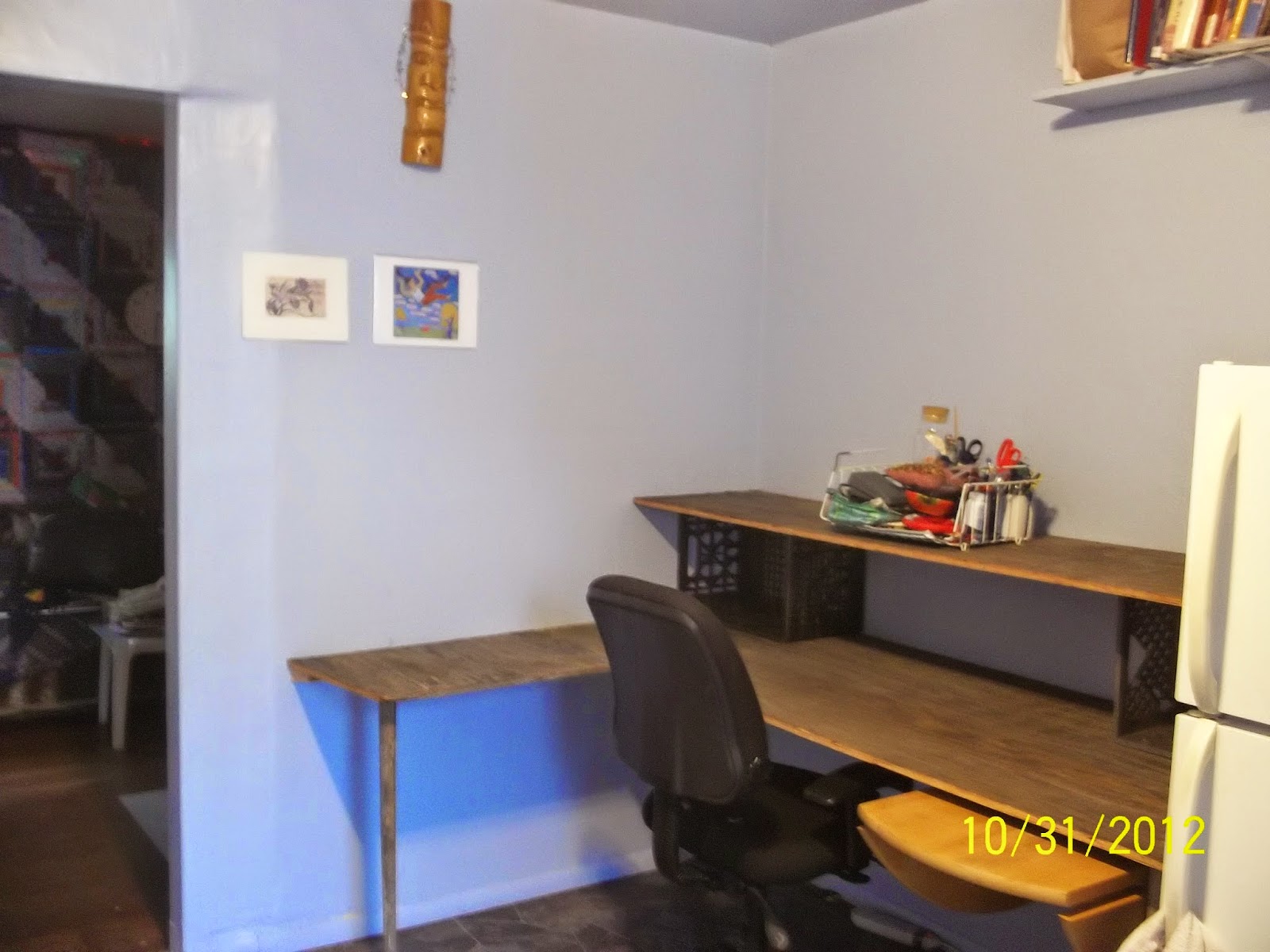One of the basic units in quilting is called a Half Square Triangle-but you could tell that from the headline !~! There are a few different ways of making them that I know of: two at a time, four at a time, just one as you need them....
The easiest I think is to make them four at a time by cutting two squares of different fabrics, pin them right sides together and sew them together a quarter of an inch in from the edge all the way around. Using a ruler and rotary cutter, cut into four pieces on the diagonals. Open the triangle, press the seam toward the darker fabric and trim the dog ears.
This is my first try at HSTs. I made this back in the very early days of quilt-making with fabric from clothing given to me by Myra (the yellow fleece), fabric from Karen (the border and backing) and a remnant from JoAnn's bargain bin (the white flowered fleece).
Sitting here in the dark, vaping for pain, ideas flit in and out: I want to make a piece with the Karen fabrics-the orange and yellow plaid-like linen (above border) that she sent me ages ago. I want to help Lucia finish the HST quilt we started some time back using those same fabrics; I should give Lu that other Singer I have. That could be a creative solution to a couple problems !~!
Ok, back on track here. Some of my other HST projects:
 |
This grew up to be my mouse pad when I folded it in half
and sewed it into a smaller rectangle with no padding inside.
|
 |
My favorite piece made with 2-1/2 inch squares a couple years ago.
Forty eight squares with a million choices of layout.
|
 |
This ended up a doll blanket for my granddaughter, Madison in Oklahoma.The squares are over three inches.
|
This started with 3-inch squares and ended up perfect size for a pillow.
I have a stack of these squares left over; they're great learning tools as described below.
Mug rug for Phyllis in Canada.
The biggest project to date with this incredibly multi-faceted block is still in progress. I finished the flimsy and it sits, folded, next to my machine awaiting a place to spread itself out and be basted. The backing needs to be sewn together on the long axis and I think since that's a wide wale corduroy (nodding to
Stephanie) there's no need to put batting between the layers. Likely I will tie it-too much for my bottom of the line Singer.
Layout Choices Abound
One can find innumerable pictures of layouts online using Google Image Search. The most impressive, in my opinion is this one by an unknown programmer that shows seventy-three different symmetrical configurations. There may be millions of permutations when you add in the non-symmetrical layouts. So much fun, I have two stacks of HSTs that I love to play with and move about trying for esthetically pleasing, or not, layouts. Excellent for the podlings and kidlets learning pattern recognition with soft, colorful tools.
Perhaps you'll make some HST's and join the fun and versatility of them. Using contrasting colors increases the visual factor a lot. Monochromatic color schemes are also very pretty with many shades and tints being used in one piece. Have fun; share your pictures as you go...
Thanks for coming by, I know you're all busy and having you for a minute or two makes me happy.



















's+flimsy+from+the+rear.jpg)

